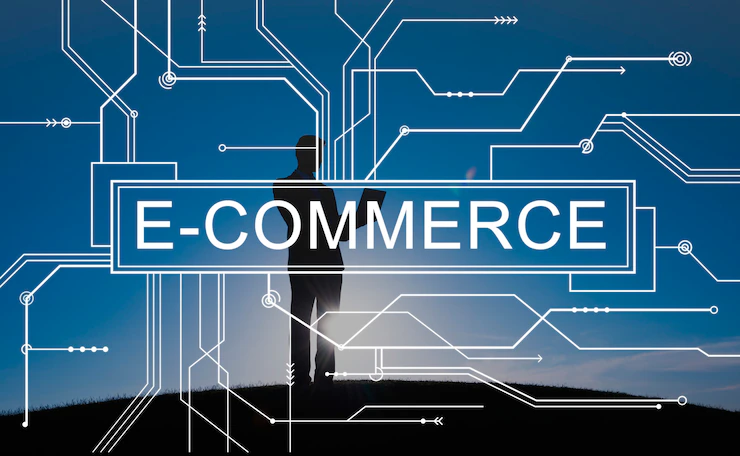In the bustling era of the internet where cute pictures and videos go viral in seconds, there is a rising opportunity for all business owners - E-commerce. It’s like a digital shopping extravaganza that never sleeps, customers just browse and buy within a few clicks. It is now important for even small businesses out there to have an online presence. Not just an online presence, but an online presence with a great reputation!

What is e-commerce?
E-commerce refers to the online buying and selling of goods and services. In the modern technology era, e-commerce has opened up expansive opportunities for small and medium-sized businesses and aspiring entrepreneurs. The digital platform allows businesses to reach a global audience, transcend geographical limitations, and operate 24/7. By leveraging e-commerce technology, businesses can tap into a world of possibilities, expand their customer base, and unlock the potential for growth and success in the ever-evolving digital marketplace.

Why should you go online?
There are several compelling reasons why you should take your small business online. These include; ● Expanded market reach
● Increased sales and revenue
● Cost-effectiveness
● Enhanced customer experience
● Access to valuable data and insights
● Competing with larger players
ALSO READ: Branding In A Competitive Market: The Power And Significance Of Building A Strong Brand And How To
How to go about the adoption of e-commerce.
1. Evaluate your business readiness. This means accessing various aspects of your small business to determine if you have all the necessary resources, capabilities, and infrastructure in place. These necessities include a social media page, a good website, excellent shipping services, technologies for tracking data and others, and most importantly money. Evaluation will help you identify if you are truly ready for a successful e-commerce transition, unlock new business opportunities, and improve your business performance in the digital landscape.
2. Choose the right e-commerce solution. You must understand that some e-commerce platforms are better than others for certain businesses. To choose the right e-commerce solution, you should consider factors such as your industry, target audience, and specific needs. For example, if you have a clothing boutique, you might benefit from a platform that offers robust product customization options and integration with popular social media channels. On the other hand, if you have a subscription-based service, you might want to prioritize a platform that supports recurring payments and offers automated subscription management features. Also, ensure that the platform has good security measures for data encryption and fraud protection. Examples of social media platforms with suitable features are Shopify, BigCommerce, WooCommerce, and Magento.

3. Start with a focused product range. Narrow down your offerings to a specific set of products or niche markets. This will give you an in-depth understanding of your customer's needs and make you an expert in the field. Also, finding the most effective strategies for making better revenues will not overwhelm you. You are ultimately focused on what makes the specific product sell, thereby bringing back old and inviting new customers.
4. Optimize your website for conversion. Create a visually appealing and intuitive website that encourages conversions. See that your website loads quickly, has clear navigation, and prominently displays your products and their benefits. Also, there should be sections for customer reviews, trust badges, and secure payment options to instill confidence in every potential buyer.

5. Leverage social media and content marketing. Utilize social media platforms like Facebook, Instagram, LinkedIn, and Twitter to market your products and services. A big number of people are on social media for an average of 3 hours per day. You can use this to your advantage by exploring social media adverts to reach more people and invite clicks and conversions to your website. Also, people love great content! Develop a content strategy that includes informative blog posts, videos/reels, or podcasts related to your industry.
6. Localize our SEO efforts. Focus on local search engine optimization (SEO) to increase visibility in your location. Use location-specific keywords to optimize your website and create local business listings on platforms like google my business. Don’t forget to also consider local community events and collaborations to attract nearby customers.
7. Emphasize personalized customer service. As a small business, one of your greatest advantages is the ability to provide personalized customer service. Do this by responding promptly to customer inquiries and providing assistance throughout the buying process. Consider implementing live chat or chat box functionalities to enhance customer support and improve satisfaction.

8. Collaborate with complementary businesses. Lastly, Seek partnerships with other small and medium-sized businesses that offer complementary products or services. Explore cross-promotion opportunities, joint marketing campaigns, or bundled offerings. By leveraging each other’s customer bases, you can expand your reach and tap into new markets.
In conclusion, the adoption of e-commerce presents immense potential for small businesses to achieve success and growth in the digital era. To harness the potential of e-commerce, small businesses should prioritize website optimization, secure online payment systems, and effective digital marketing strategies. They should also focus on building trust and credibility through transparent customer communication, reliable product information, and excellent customer service.



